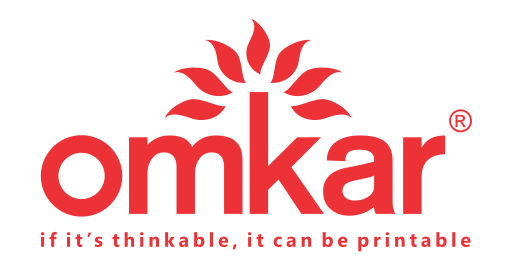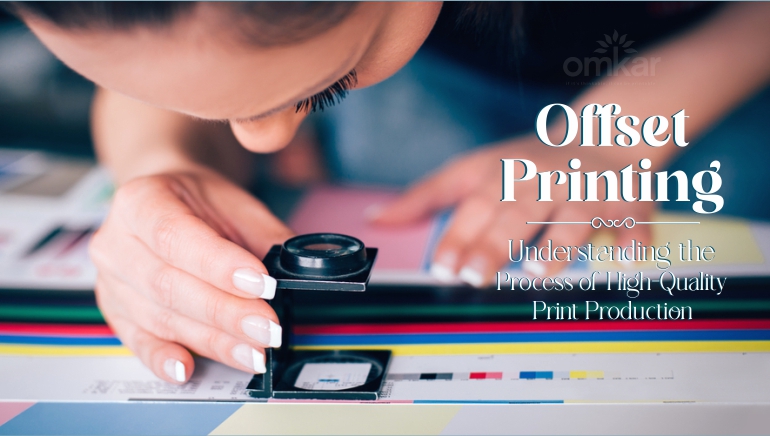Offset Printing: Understanding the Process of High-Quality Print Production
Offset printing, also known as lithography, is a popular printing technique that has been in use for over a century. It is a versatile printing process that can produce high-quality prints on a wide range of surfaces, including paper, cardboard, plastic, and metal. Offset printing is used to produce everything from newspapers and magazines to packaging and promotional materials.
The offset printing process involves several steps, each of which plays a critical role in producing a high-quality print. In this article, we will take a detailed look at how offset printing works, including the equipment and materials used in the process, and the various steps involved in producing a print.
Equipment and Materials Used in Offset Printing
The offset printing process requires several pieces of specialized equipment, each of which is essential to producing high-quality prints. The main equipment and materials used in offset printing include:
- Offset Printing Press: The offset printing press is the heart of the printing process. It is a large machine that applies ink to a printing plate, which in turn transfers the ink onto the paper or other substrate.
- Printing Plate: The printing plate is a thin, flat sheet of metal, usually made of aluminum or a similar material. The image or text to be printed is etched onto the surface of the plate using a photographic process.
- Ink: Ink is a viscous liquid that is applied to the printing plate and transferred to the paper or other substrate. Offset printing uses a special type of ink that is oil-based, rather than water-based.
- Fountain Solution: The fountain solution is a mixture of water and chemicals that is used to keep the non-image areas of the printing plate moist and free of ink.
- Blanket: The blanket is a rubberized sheet that is wrapped around a cylinder on the printing press. It is used to transfer the ink from the printing plate to the paper or other substrate.
- Paper or Substrate: The paper or other substrate is the material onto which the image or text is printed. Offset printing can be used to print on a wide range of substrates, including paper, cardboard, plastic, and metal.
Steps Involved in Offset Printing
The offset printing process involves several steps, each of which plays a critical role in producing a high-quality print. The main steps involved in offset printing include:
- Prepress Preparation: The first step in offset printing is prepress preparation. This involves preparing the artwork or digital files for printing, including adjusting colors and making sure that the text and images are correctly positioned on the page. The prepress preparation also involves creating a printing plate for each color that will be used in the print.
- Plate Production: Once the artwork or digital files have been prepared, the next step is to create the printing plates. This involves exposing the printing plate to light through a photographic negative, which transfers the image or text onto the plate. The plate is then treated with chemicals to remove the non-image areas, leaving only the image areas that will be used to transfer ink onto the paper or other substrate.
- Printing: Once the printing plates have been created, the next step is to start the printing process. The printing press applies ink to the printing plate, which is then transferred to the blanket and finally onto the paper or other substrate. This process is repeated for each color that will be used in the print.
- Drying: After the ink has been applied to the paper or other substrate, the next step is to allow the ink to dry. This is typically done by passing the printed material through a drying oven or by allowing it to air dry.
- Finishing: Once the ink has dried, the final step is to finish the printed material. This may involve cutting the paper or substrate to the desired size, folding it into the desired shape, adding coatings, or other finishing touches to enhance its appearance or functionality.
Let’s take a closer look at each step of the offset printing process.
- Prepress Preparation
The prepress preparation step is where the artwork or digital files are prepared for printing. This typically involves several steps, including:
- Color Adjustment: Adjusting the colors in the artwork or digital files to ensure that they match the desired output.
- Layout and Positioning: Ensuring that all text and images are properly positioned on the page, with the correct margins and spacing.
- Image Retouching: Retouching images to remove any imperfections or blemishes.
- Proofing: Creating a digital or physical proof of the print to ensure that it meets the desired quality and specifications.
Once the artwork or digital files have been prepared and approved, the next step is to create the printing plates.
- Plate Production
The printing plates are created using a photographic process. The process typically involves the following steps:
- Plate Preparation: The plate is cleaned and coated with a light-sensitive emulsion.
- Image Exposure: A photographic negative is placed over the plate, and it is exposed to light. The areas of the plate that are exposed to light harden, while the non-image areas remain soft.
- Chemical Treatment: The plate is treated with chemicals that dissolve the soft, non-image areas of the plate, leaving only the hardened image areas.
- Plate Mounting: The printing plates are mounted onto the printing press, one for each color that will be used in the print.
- Printing
Once the printing plates have been created and mounted onto the printing press, the printing process can begin. The printing process typically involves the following steps:
- Fountain Solution: The fountain solution is applied to the non-image areas of the printing plate, keeping them moist and preventing them from attracting ink.
- Ink Application: Ink is applied to the printing plate, which is then transferred to the blanket on the printing press.
- Transfer to Paper: The blanket transfers the ink from the printing plate to the paper or other substrate.
- Color Registration: Each color is printed separately, with the printing plates and blankets adjusted for precise color registration.
- Repeating the Process: The process is repeated for each color that will be used in the print.
- Drying
Once the ink has been applied to the paper or other substrate, the next step is to allow the ink to dry. This is typically done by passing the printed material through a drying oven or by allowing it to air dry. Drying time can vary depending on factors such as ink type, paper type, and printing conditions.
- Finishing
The final step in the offset printing process is finishing. This step involves several different processes, including:
- Cutting: Cutting the printed material to the desired size and shape.
- Folding: Folding the printed material into the desired shape, such as a brochure or a book.
- Coating: Applying a coating to the printed material to enhance its appearance or protect it from damage.
- Binding: Binding the printed material together, such as with a saddle stitch or perfect binding.
Offset printing is a versatile printing process that can be used to produce high-quality prints on a wide range of substrates. The process involves several steps, each of which plays a critical role in producing a high-quality print. By understanding the offset printing process, you can better appreciate the work that goes into producing the printed materials that we see and use every day.

